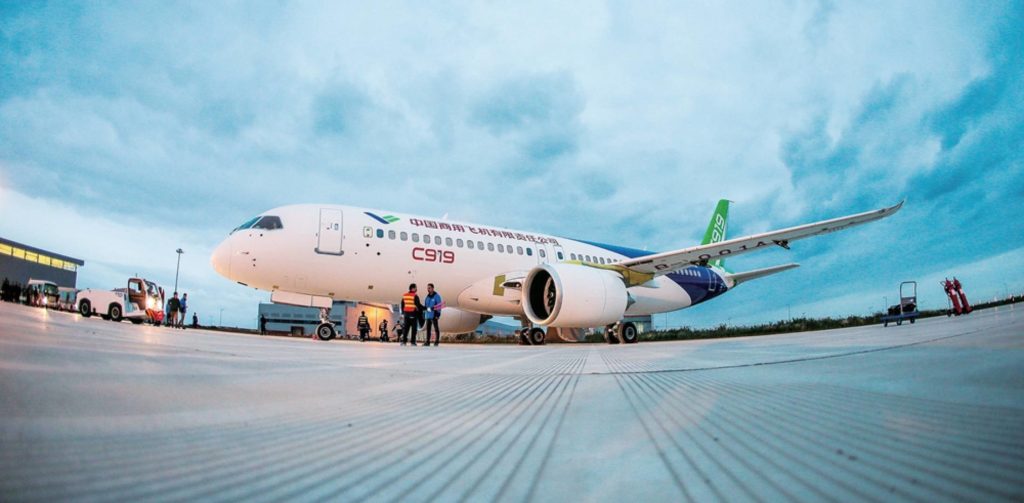




09 Sep 2025
Sustainability Beyond CO₂: Tracking the Full Environmental Impact of Aircraft
When the world thinks of aviation and sustainability, one word dominates the conversation: carbon. CO₂ emissions have become the headline metric for climate action, the basis of policy, and the target of investor scrutiny. But here’s the truth that often goes unspoken: carbon is only part of the picture.
For aircraft lessors and operators, sustainability goes far beyond CO₂. From noise footprints that affect entire communities to contrail formation that warms the planet more than carbon itself, and end-to-end lifecycle impacts of materials and disposal, the aviation industry’s environmental accountability is expanding rapidly. Regulators, financiers, and airlines are starting to demand a more holistic lens. And for lessors, this shift is not just about compliance, it’s about staying relevant in an ESG-driven investment climate.
This blog explores what “sustainability beyond CO₂” really means, why it matters to the leasing sector, and how proactive tracking of these wider metrics can safeguard portfolio value, strengthen relationships with airlines, and prepare lessors for the next wave of reporting requirements.
Why the Carbon-Centric View Is No Longer Enough
For decades, aviation’s environmental narrative has been dominated by fuel burn and carbon output. This made sense: fuel is the single biggest cost driver for airlines, and CO₂ emissions are the most quantifiable metric tied to climate goals under frameworks like ICAO’s CORSIA.
But as climate science evolves and ESG expectations rise, stakeholders are widening their scope. Recent studies suggest that non-CO₂ impacts account for nearly two-thirds of aviation’s climate effect. This includes contrails, nitrogen oxides (NOx), water vapor, and aerosols, all of which interact with the atmosphere in complex ways.
Meanwhile, the social dimension of sustainability has sharpened around noise pollution. Airports are under pressure from communities and governments to minimize acoustic footprints, influencing flight paths, slot allocations, and even airport expansion approvals.
And finally, lifecycle assessments from aircraft manufacturing to end-of-life dismantling are gaining traction. Stakeholders increasingly want transparency on the embedded emissions and environmental toll of aviation assets, not just their operational output.
The Expanding Spectrum of Environmental Impacts
1. Noise Pollution
Aircraft noise has always been an operational headache, but it is fast becoming a sustainability metric in its own right.
- Why it matters: Noise affects communities near airports, impacts public health, and directly influences regulatory limits. Airlines that operate older, noisier aircraft risk losing access to high-demand airports or facing curfews.
- For lessors: Leasing portfolios with quieter, next-generation aircraft are more attractive to airlines under increasing noise restrictions. Tracking and reporting noise compliance builds value transparency into asset selection.
2. Contrails and Non-CO₂ Climate Effects
Contrails the ice-cloud formations left by aircraft at altitude may look harmless but are among aviation’s most significant climate impacts.
- Why it matters: Contrail-induced cirrus clouds trap heat in the atmosphere, contributing to warming. In fact, some studies show contrails have a greater short-term warming effect than the CO₂ from jet engines.
- For lessors: While contrail avoidance is largely operational (flight path adjustments, altitude changes), lessors that understand and can report on fleet-level non-CO₂ impacts will stand out to ESG-focused financiers.
3. Lifecycle Emissions and Resource Use
Aircraft are massive engineering feats, built with aluminum, composites, and increasingly rare materials. From manufacturing energy use to recycling challenges at the end of service life, lifecycle impacts are under the microscope.
- Why it matters: Investors and regulators are beginning to demand full lifecycle transparency, similar to other industries (e.g., automotive, construction).
- For lessors: Aircraft with strong dismantling and part-recycling pathways will retain more long-term value and meet evolving circular economy standards.
4. Water Vapor and NOx Emissions
While harder to measure than CO₂, these emissions alter atmospheric chemistry and cloud formation, with tangible climate effects.
- Why it matters: Science-based targets for aviation are moving toward incorporating these factors, meaning future compliance won’t stop at carbon accounting.
- For lessors: Awareness and readiness will become critical when regulators and investors push for broader disclosures.
Why Lessors Need to Care Now
For aircraft lessors, the role in sustainability is sometimes viewed as one step removed. After all, it is the airlines that operate the assets, decide on fuel efficiency, and manage day-to-day impacts. But this view is changing quickly.
1. Investor and Lender Expectations
Financiers are embedding ESG requirements into their lending conditions. Lessors unable to provide holistic sustainability data may face higher borrowing costs or reduced access to green financing instruments.
2. Portfolio Risk Management
Aircraft that fail to meet future noise, contrail, or lifecycle standards could become stranded assets, harder to lease or sell. Data transparency allows lessors to anticipate regulatory risk and adjust portfolios accordingly.
3. Reputation and Relationship Value
Airlines are under immense pressure from regulators and customers to improve sustainability reporting. Lessors that can supply multi-dimensional environmental data don’t just deliver aircraft — they deliver competitive advantage to their clients.
The Challenge: Avoiding “Reporting Fatigue”
The danger is obvious: if every new metric becomes another spreadsheet or audit, stakeholders will drown in data without gaining real insight. Lessors and airlines alike are wary of documentation fatigue where compliance becomes a box-ticking exercise instead of a meaningful strategy.
What’s needed is integrated reporting: a framework that captures multiple metrics, translates them into stakeholder-friendly formats, and links them directly to asset performance.
Acumen’s Perspective: Practical Sustainability Reporting
At Acumen, we’ve seen firsthand how fragmented sustainability reporting can create confusion rather than clarity. Our approach focuses on three pillars:
- Data Integration: Bringing together CO₂, noise, lifecycle, and operational data into unified platforms rather than siloed reports.
- Stakeholder Alignment: Designing reports that speak the language of lessors, airlines, financiers, and auditors balancing technical detail with decision-ready insights.
- Future-Proofing: Building reporting frameworks that evolve as science and regulation shift, ensuring clients are prepared not just for today’s ESG standards, but tomorrow’s.
By combining technical expertise in aircraft records with a deep understanding of sustainability metrics, Acumen helps lessors turn reporting from a burden into a differentiator.
The Road Ahead: From Compliance to Strategy
The aviation industry is at an inflection point. What was once a narrow carbon-focused conversation is expanding into a multi-dimensional view of environmental impact. For lessors, this evolution brings both challenge and opportunity.
- Challenge, because staying ahead of emerging metrics requires investment in data, expertise, and systems.
- Opportunity, because those who can track, report, and manage impacts beyond CO₂ will not just protect their assets, they will enhance their market relevance in an ESG-conscious era.
Ultimately, sustainability beyond CO₂ is not just about compliance. It’s about building trust with investors, delivering value to airline customers, and positioning leasing portfolios for resilience in a world where environmental scrutiny will only intensify.
Closing Thought
Aviation’s future cannot be measured in carbon alone. For lessors, the real test will be in acknowledging the full spectrum of environmental impacts and proving, with clear data and transparent reporting, that every aircraft in the portfolio is part of the solution, not the problem.





